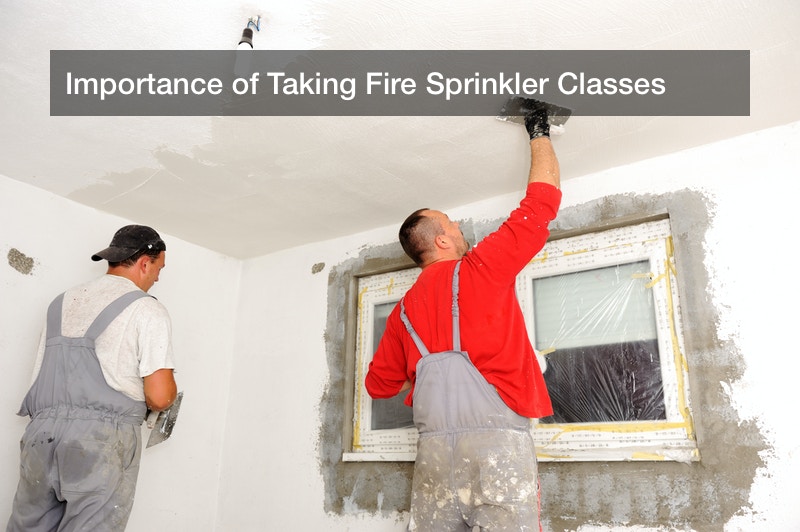
Fire accidents can be fatal. They can lead to the loss of lives as well as damage to property worth a lot of money. Therefore, fire sprinkler companies are on the frontline in ensuring that we prevent fire tragedies to the maximum.
Since many companies and organizations want to invest in fire prevention, the need for fire sprinkler designers is on the rise. To become a well-renowned fire sprinkler designer, you must enroll for fire sprinkler classes. You must have an exemplary performance and the needed knowledge attained from fire sprinkler classes to work with a reputable fire sprinkler contractor.
How Fire Sprinklers Work
If you are keen around offices, you must have noticed these fire sprinklers on the roof. They do an incredible job of protecting structures from fire. Ideally, a fire sprinkler can either be wet or dry. Nevertheless, both fire sprinkler designs operate on a similar principle, suffocating the fire origin.
Although the fire sprinklers are installed to put out a fire, they only do so when the fire is severe. Minor incidences such as a microwave blowing up cannot set off the sprinkler.
As the name suggests, wet fire sprinklers work by sprinkling water at the area around the fire while dry sprinklers contain nitrogen gas. These sprinklers cannot work on electricity since that would only make the situation worse. Therefore, they rely on heat and pressure.
For wet sprinklers, the water is released when a particular heat is attained while a dry sprinkler will release the gas when the metal alloy in the sprinkler nozzle melts. Surprisingly, even a sweltering day can heat the sprinklers and set them off.
Which is Better, Wet, or Dry?
Although they are both practical, a wet sprinkler would generally respond fast that a dry sprinkler. Therefore, most people prefer wet fire sprinkler systems over dry ones. However, nothing is without a fault. Sometimes, the water inside wet sprinkler systems might freeze, compromising their effectiveness.
Probable Reasons for Mediocre Sprinkler Performance
Sometimes, fire accidents happen, despite having installed a fire sprinkler in a building. A fire accident is an indication of a faulty fire sprinkler system. One of the leading causes of failure is a cut off in the water supply. If your building has wet sprinkler systems, cutting off the water supply renders the system ineffective. An inadequate amount of water could also lead to ineffectiveness. Additionally, if the water supply is disrupted during the fire, the attempts to fight the fire might not bear any fruit.
Another cause of failure is the poor design of the sprinkler system. Different buildings have different hazard levels. Therefore, if the current system does not suit the building’s hazard levels, it poses a risk. Taking fire sprinkler classes ensures that you can develop the correct fire sprinkler system for any particular structure.
For fire sprinkler systems to remain valid, they have to be in good condition at all times. That calls for regular maintenance. To avoid issues, make sure you conduct inspections from time to time.
Steps in Feasible Fire Sprinkler Design
The Building Hazard Levels
Understanding the hazard level of your building goes a long way in helping choose the right fire sprinkler system for it. Different sprinkler systems have different capabilities; hence, not everything can work for you. The five hazard categories are a light hazard, ordinary hazard group 1, ordinary group 2, extra hazard group 1, and extra hazard group 2.
To determine your house’s hazard levels, you consider factors such as the construction materials used, the people accommodated by the building, and the items currently stored in it. Your building’s dimensions, such as height, also contribute to the determination of hazard levels.
Area and Density
After the fire sprinkler designer is sure of your building’s hazard level, the next step is figuring out the building density. This is the space where the most damage is likely to take place in case of a fire outbreak. When you determine the risk level of a small portion of the building, we can use it to approximate the risk level for the entire building.
Fire sprinkler companies will put into consideration the above factors to determine the right fire sprinkler system.
You can easily become a designer by joining the fire sprinkler online training or joining fire sprinkler classes.
